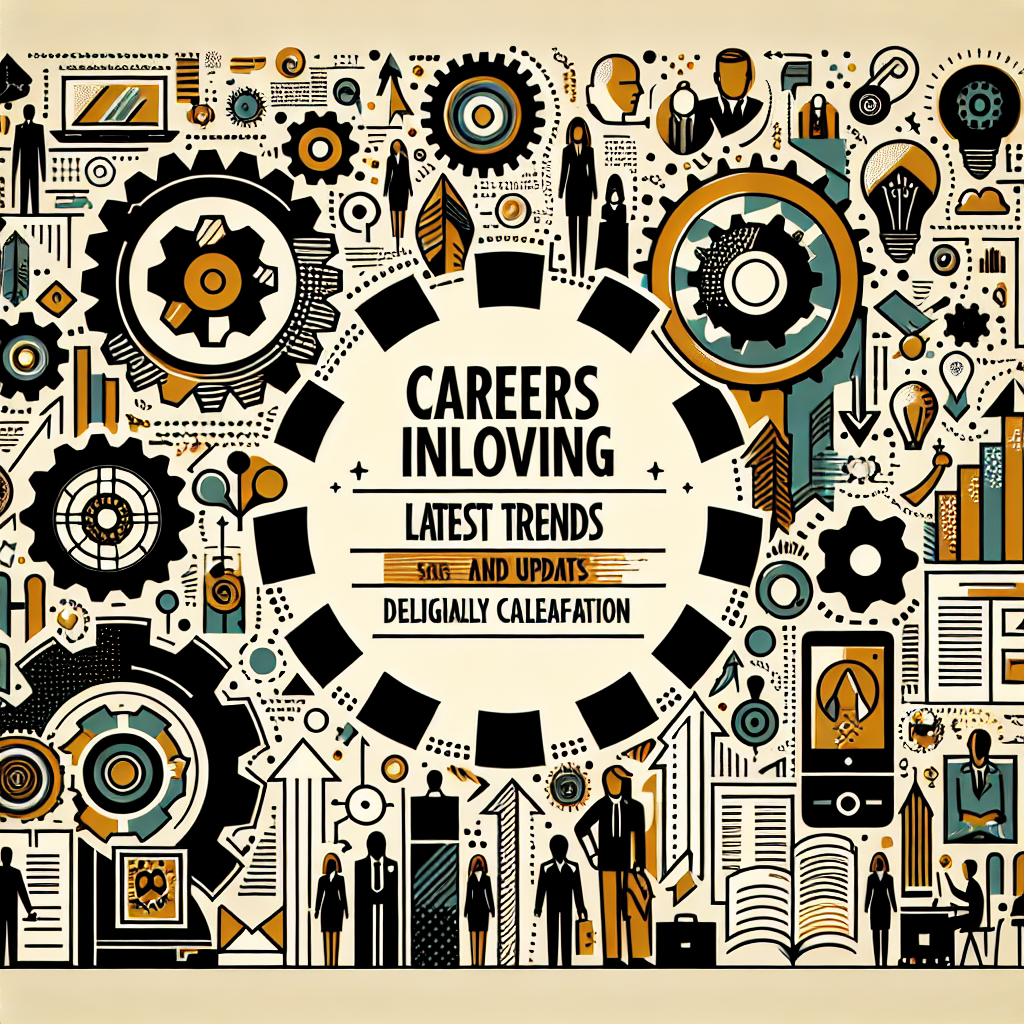The world of work is shifting quickly, and staying informed helps jobseekers and career changers adapt. Careers Involving: Latest Trends and Updates offers a snapshot of the forces reshaping roles, from automation and remote work to sustainability and lifelong learning. This article summarizes where demand is growing, which skills employers prize, and how professionals can position themselves for success.
Trends and updates in careers involving emerging sectors
Several consistent patterns are influencing hiring and career pathways today. Technology continues to be a major driver—artificial intelligence, machine learning, and cloud computing expand opportunities across industries. At the same time, healthcare needs, green economy investments, and digital services are creating hybrid roles that blend technical, analytical, and interpersonal skills.
Key drivers shaping job markets
- Automation and AI augment many tasks, increasing demand for roles that design, manage, or complement these systems.
- Remote and hybrid work models expand geographic hiring pools and emphasize collaboration, communication, and self-management skills.
- Demographic shifts and aging populations sustain growth in healthcare, senior care, and related support services.
- Climate policy and corporate sustainability commitments widen roles in renewable energy, environmental science, and green project management.
- Continuous learning and microcredentials become mainstream as workers reskill mid-career to remain competitive.
Skills employers want now
Employers increasingly look for a blend of technical proficiency and transferable soft skills. Technical skills vary by field—data literacy for analysts, cloud platforms for developers, and regulatory knowledge for healthcare and energy professionals. Soft skills like communication, adaptability, critical thinking, and emotional intelligence are consistently ranked highly because they help workers collaborate across disciplines and adapt to rapid change.
How to build a resilient skillset
Focus on three parallel strategies: upskilling, practical experience, and network expansion. Online courses and certificate programs can deliver targeted knowledge quickly. Project-based learning—contributing to open-source projects, freelance gigs, or volunteer initiatives—builds demonstrable outcomes. Finally, joining professional communities or mentoring circles accelerates learning and reveals hidden job opportunities.
High-growth roles and cross-disciplinary careers
Rather than single-occupation predictions, look for clusters of related roles that cross industries. For example, data science skills pair well with healthcare analytics, environmental monitoring, or supply-chain optimization. Similarly, user experience (UX) design blends psychology, design, and technology to serve sectors from finance to education.
For more targeted guidance on midlife transitions and re-entering the workforce, especially for mature professionals exploring new directions, see starting fresh: new career paths for women at 50, which offers practical steps and inspirational examples.
Practical steps to stay marketable
- Perform a skills inventory: map current strengths to in-demand competencies and identify gaps.
- Create outcome-focused portfolios: include case studies, project results, and metrics where possible.
- Embrace short, stackable credentials: certificates in cloud platforms, data analytics, or specific software can accelerate hiring decisions.
- Prioritize networking: join industry groups, attend webinars, and use informational interviews to learn and connect.
- Remain flexible about role titles and sectors: many skills transfer across fields, so broaden search criteria.
Policy and labor-market context
Macro trends—education access, immigration policies, and public investment in infrastructure and green initiatives—shape long-term job availability. For those tracking occupational outlooks and sector-by-sector forecasts, authoritative labor reports are useful reference points. For example, the U.S. Bureau of Labor Statistics provides detailed occupational profiles that can help you gauge job growth, typical entry requirements, and median wages in specific fields: Bureau of Labor Statistics overview of computer and IT occupations.
Balancing short-term moves with long-term planning
Short-term tactics (freelance work, certification, temporary assignments) can bridge income gaps and build experience while you pursue longer-term career pivots. Think in two- to five-year horizons: which roles provide immediate employability and which pathways lead to sustained advancement?
FAQ
Q: What industries are hiring the most right now?
A: Technology, healthcare, renewable energy, logistics, and education technology are among the sectors showing steady hiring, though specific demand depends on region and skill set.
Q: Is it worth getting a full degree for a career pivot?
A: Not always. Many career changes can succeed with targeted certifications, bootcamps, or accumulated project experience. A degree may be necessary for regulated professions (e.g., medicine, licensed counseling).
Q: How quickly can I reskill for a new role?
A: Timelines vary—entry-level technical roles can be accessible within months of focused study and projects, while senior transitions often take several years of networking and experience. Combining learning with hands-on projects shortens the path.
Staying current means observing both macro shifts and practical signals in hiring notices, employer skill requests, and credential preferences. By combining strategic learning with real-world experience and purposeful networking, professionals can navigate change and find meaningful, future-oriented roles.



